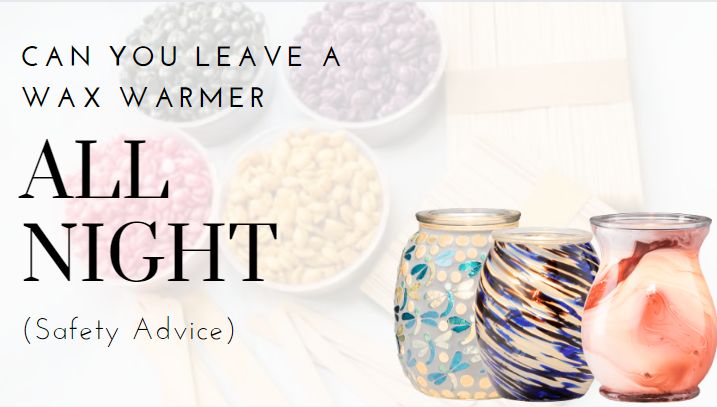Do Candles Release Phthalates?
Phthalates are a group of chemicals used to soften and increase the flexibility of plastic and vinyl materials. They are commonly added to products like food packaging, cosmetics, toys, and even medical devices. In recent years, there has been increasing concern that phthalates may have negative health impacts, especially on children and pregnant women. One product that has come under scrutiny is scented candles, which often contain phthalates.
When candles are burned, chemicals like phthalates can be released into the air. Some studies have detected concerning levels of phthalates in indoor air when candles were burned. This has raised questions about whether breathing in these chemicals from candles could potentially lead to health issues. However, the candle industry maintains that their products are safe when used as directed. There is an ongoing scientific debate about how much phthalates candles actually contribute to indoor air, and if the levels are high enough to be worried about.
This article will examine the evidence around whether burning candles releases phthalates, and if this could pose health risks. We’ll look at how candles are tested, what research says about exposure levels, and steps you can take to minimize risks. The goal is to provide the facts so you can make informed choices about candle use in your home.
What Are Phthalates?
Phthalates are a group of chemical compounds used to soften plastics and make them more flexible. They are commonly added to plastic products like food packaging, children’s toys, medical devices, and beauty products.
Phthalates can also be found in a variety of other consumer goods, including automotive parts, paints, adhesives, caulking, floor tiles, carpeting, shower curtains, garden hoses, raincoats, and some personal care items.
There are many different types of phthalates, but some of the most common ones include DEHP, DBP, and BBP. Some phthalates have been linked to health issues in laboratory animal tests. Potential effects include reproductive and developmental problems, particularly in male infants and children. However, most human exposure comes from direct contact with products containing phthalates rather than from any one specific source.
Phthalate Use in Candles
Phthalates are commonly added to candle wax to help harden the wax and extend the burn time of candles. They make the wax more durable and resistant to melting in warmer temperatures. Phthalates are also frequently used in synthetic fragrance oils added to scented candles to help the fragrance last longer.
However, not all candles contain phthalates. Some candle manufacturers now produce phthalate-free candles that use alternative ingredients to harden wax and carry fragrance oils. But many mass-produced, cheap candle brands still rely on phthalates as an inexpensive way to improve the burn performance of their candles.
So while phthalates may be present in some candle products, there are phthalate-free options available for consumers who are concerned about exposure from burning candles containing these chemicals.
Potential Health Impacts
Some phthalates have been associated with potentially harmful health effects, especially types known as endocrine disruptors that can interfere with hormone systems in the body. Research suggests links to developmental and reproductive issues, asthma, breast cancer, obesity, type 2 diabetes, neurodevelopmental delays in children, and reduced sperm counts in adults. However, there are many types of phthalates with varying levels of risks. The impacts of low-level exposure over long periods remain uncertain.
Phthalates do not accumulate in the body but break down over hours or days and leave through urine. Thus, exposure comes from multiple daily sources in our environment, not just candles. Phthalates are widely used in plastics, personal care products, food packaging, medical devices, and more. With such widespread exposure, definitively linking any potential effects to a specific product is extremely difficult. The risks from candle exposure alone are likely very minimal compared to total exposure.
More research is still needed to determine safe levels of exposure for different phthalates and potential effects, especially for vulnerable groups like pregnant women and young children. While some types have been linked to health issues, the jury is still out on risks from lower exposures over time. Precautionary efforts to reduce exposure may be warranted, but fears should be weighed appropriately against the small potential contribution from candles.
Testing Candles for Phthalates
Unlike products like toys and childcare items, there are currently no labelling requirements for phthalates in candles. This means that candle manufacturers are not obligated to disclose if their products contain phthalates.
However, independent testing has detected concerning levels of phthalates in certain candles. For example, a 2015 study published in the journal Air Quality, Atmosphere and Health tested eight types of scented candles purchased in Europe. The researchers found that all eight candles emitted phthalates when burned, with the highest levels found in a vanilla-scented candle.
Another study by the University of North Carolina at Chapel Hill tested candles purchased in the United States. This testing found that over 50% of the candles contained phthalates, with the highest concentrations found in cinnamon and other spicy scented candles. The researchers suggested that ingredients added to give candles scent, such as fragrance oils, may be a source of phthalates.
So while manufacturers are not required to report phthalate content, independent research indicates that phthalates are present in at least some scented candle products currently on the market.
Reducing Exposure
There are a few ways to reduce your exposure to phthalates from candles. Look for phthalate-free candles, especially those made from soy, beeswax, or essential oils. These alternative wax candles are often clearly labeled as phthalate-free. Limiting the burning time of candles will also help – extinguishing a candle after an hour or so instead of letting it burn all the way down. Use candles in well-ventilated areas to help disperse any chemicals in the air. Opening a window while burning candles can help with this. In general, it’s best to not rely too heavily on candles as a primary lighting source if you have concerns about phthalates. There are other alternatives like LED lighting that avoid chemicals entirely.
Industry Response
Many major candle manufacturers claim they do not intentionally add phthalates during production. However, some phthalates may enter candles through fragrance oils and wicks acquired through complex global supply chains. Leading brands like Yankee Candle and Bath & Body Works have announced voluntary phase outs of phthalates like DEHP, DBP, and BBP. Most reputable brands avoid the highest-risk phthalates, responding to consumer demand. But supply chain issues can make it difficult for companies to guarantee zero phthalates. The National Candle Association has argued that phthalate exposure from candle usage poses little risk. They cite studies showing phthalate emissions from candles are well below government-mandated thresholds. While further research is needed, occasional candle usage likely poses minimal risk for most people.
Government Regulation
There are currently no federal laws in the United States regulating the use of phthalates in candles. The Consumer Product Safety Commission, which oversees product safety regulations, has not placed any mandatory restrictions on phthalates in candles.
However, some states have taken action to limit certain phthalates. For example, California has banned candles containing DEHP, DBP, and BBP — three phthalates known to be toxic to reproduction. Products sold in California containing over 1,000 ppm of these phthalates must include a warning label.
Many public health and consumer advocacy groups have been calling for increased government oversight and mandatory testing for phthalate levels in candles. They argue that more research needs to be done to establish safety standards and determine the impacts of long-term phthalate exposure from candles.
Currently, candle manufacturers are not required to disclose whether their products contain phthalates or to routinely test them. Without stricter regulations, critics say consumers will continue to lack sufficient information to make fully informed purchases.
The Bottom Line
The evidence suggests phthalates are present in some candles, particularly those made with paraffin wax. However, the health impacts of exposure to phthalates from candles is still being studied, and remains unclear, especially at the low levels released while burning candles.
Consumers who are concerned can minimize their exposure by being informed and selective when purchasing candles. Opting for candles made from natural waxes like soy, beeswax, or coconut wax can reduce the risk of phthalate exposure. Reading labels and avoiding candles with artificial dyes and fragrances can also help reduce phthalate content.
While more research is still needed, being an educated, mindful consumer can go a long way in limiting exposure to potentially harmful chemicals in products like candles.
Sources
Phthalates. American Cancer Society, 2022. https://www.cancer.org/cancer/cancer-causes/phthalates.html
Fragrance Compounds: The Most Common Hidden Allergens. American Contact Dermatitis Society, 2022. https://www.contactderm.org/i-have-a-rash/common-allergens
Phthalates Factsheet. Centers for Disease Control and Prevention, 2021. https://www.cdc.gov/biomonitoring/Phthalates_FactSheet.html
Candle Testing. Ecology Center, 2021. https://www.ecocenter.org/healthy-stuff/pages/candle-testing
Phthalates and Their Alternatives: Health and Environmental Concerns. Lowell Center for Sustainable Production, 2011. https://sustainableproduction.org/downloads/PhthalateAlternatives-2011.pdf
Candle Industry Voluntary Standard. National Candle Association, 2022. https://www.candles.org/candle-industry-voluntary-standard



